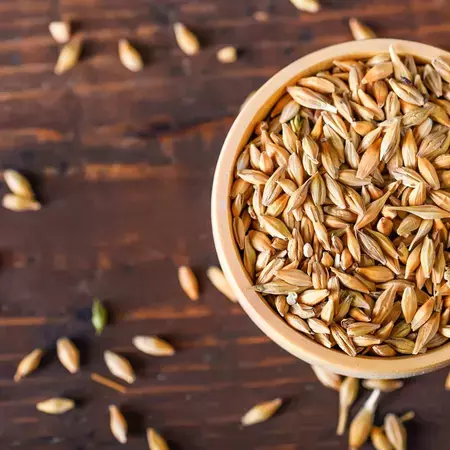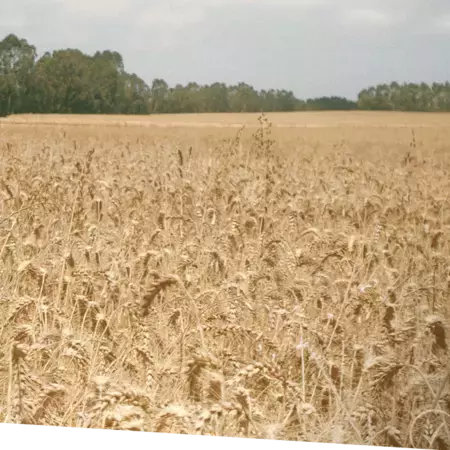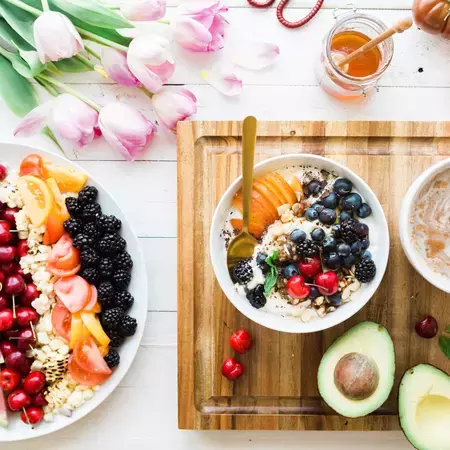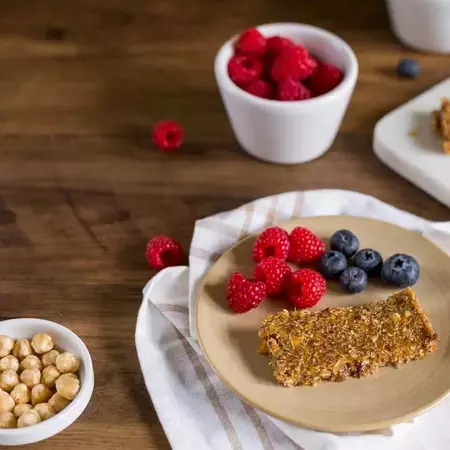Filled with carbohydrates, fibre and essential vitamins and minerals, cereals can be a nutrient-packed start to millions of people’s mornings daily. Breakfast cereals transform these grains into a quick, convenient, and versatile energy source.
But have you ever wondered what goes into your favourite bowl of cereals? In this guide, we’ll explore the different types of grains that serve as the foundation to our breakfast cereals, and how they transform into the delicious options we love.
Types of Cereal Grains
Cereal grains play a vital role in diets worldwide, offering essential nutrients and versatility. Here are some common types:
- Whole Grain: Unlike refined grains, nothing important is taken away (just the inedible bits like the hull and husk). You get all three parts of the grain, just as nature intended – the fibre-rich bran, the starchy centre, and the nutrient-packed core.
- Wheat: Wheat is a widely cultivated grain, known for its versatility in food production. You'll find it forming the basis of many staples, from bread and pasta to a variety of baked goods. At Nestlé, our focus on whole wheat grain allows us to create a wide variety of textures and forms. It’s a key component in our popular breakfast options, contributing to both their taste and nutritional value.
- Rice: Yes, rice is a type of cereal grain, and naturally gluten-free, which makes it a suitable alternative for those with gluten sensitivities. It's used in a wide range of dishes, from savoury to sweet, and is a key ingredient in many gluten-free products, including our Go Free® Rice Pops.
- Barley: Barley is a notable whole grain, appreciated for its chewy texture and subtle nutty flavour. It's a good source of fibre and is used in various culinary applications, including soups, stews, and cereals.
- Corn: Corn is unique in that its kernels are botanically classified as fruits, while it's commonly used as a vegetable, and agriculturally it's considered a cereal grain. It's a versatile ingredient found in a wide range of foods, from corn tacos to cornflakes in our Go Free® Cereals range.
- Oats: Oats are a popular and naturally high-fibre grain. They are commonly enjoyed as porridge and are also found in granola and many other baked products. Oats are a key ingredient of our Cheerios®!
Different Types of Breakfast Cereals Compared
Breakfast cereals, made from various cereal grains, offer diverse tastes, textures, and nutrition, supporting a balanced diet and providing a delicious start to the day.
High-Fibre Cereals
High-fibre cereals, like our Shreddies® Original are rich in dietary fibre, and often contain additional vitamins and minerals to support a balanced diet.
When trying to get more fibre into your diet it is important to note that in the UK the recommended adult daily fibre intake is 30g, while for children this varies by age:
Age (years) |
Recommended intake of fibre |
| 2-5 | 15g per day |
| 5-11 | 20g per day |
| 11-16 | 25g per day |
| 17 and over | 30g per day |
Why not start your morning by trying one of our delicious, high-fibre breakfast ideas - tasty and full of flavour.
Low-Sugar Cereal
For those looking to reduce their sugar intake, Shredded Wheat® Original are an excellent choice. They contain no added sugars—just one simple ingredient: whole grain wheat. With nothing extra added, it’s a straightforward breakfast option that delivers the nutrients of whole grain.
Whole Grain Cereal
Whole grain cereals are made from grains that retain all three of their natural layers (the bran, germ, and endosperm) which contain different nutrients and fibre. This makes whole grains a valuable component of a balanced diet.
Examples of whole grains used in our breakfast cereals include:
- Barley: found in products such as Multigrain Cheerios® Cereal
- Wheat: used in all of our breakfast cereals with the green banner
- Corn: naturally gluten-free, whole grain corn is used in our Gluten-Free Corn Flakes offering a suitable option for those with gluten sensitivities.
- Oats: found in our Multigrain Cheerios® Cereal
Whole grain breakfast cereals can help to provide vitamins, minerals, and fibre as part of a balanced diet.
Fortified Cereal
Starting your day with a bowl of fortified whole grain breakfast cereals is a delicious way to start the day. These kinds of breakfast cereals, such as Original Shreddies® Cereal contain added vitamins and minerals as well as fibre from the whole grains.
Vegan cereal
Vegan breakfast cereals offer a breakfast option, formulated without any animal products. These cereals are suitable for those following a plant-based lifestyle, commonly feature whole grains, plant-based proteins, and natural sweeteners.
Nestlé offers a variety of vegan cereals, including our Chocolate, Frosted and Original Shreddies®, Shredded Wheat® Original, Bitesize, and Red Berries & Vanilla variant, as well as our GoFree® Rice Pops and Corn Flakes. All designed to provide a tasty breakfast. For more information, check out our article on vegan breakfast ideas.
Gluten-Free Cereal
Gluten-free cereals provide a suitable breakfast option for individuals avoiding gluten containing cereals such as wheat, barley, or rye. Made with grains like rice, corn or quinoa, gluten free cereals such as Go Free® Gluten Free Rice Pops offer a light and crispy texture while still delivering the familiar taste of a classic breakfast cereal.
Hot Cereal
Breakfast cereals can also be enjoyed warm. For a comforting option, consider using warm milk with cereals like Shredded Wheat®. This provides a warm and soothing breakfast, particularly suitable for colder mornings. Learn more about hot or cold milk with your cereals.
What should I eat with different types of cereals?
Looking to level up your cereal game? Whether you’re into low sugar, high fibre, or warming hot cereals, these tasty toppings can bring extra flavour, texture, and variety to every spoonful:
- Top with fresh berries - Add a burst of natural sweetness, colour, and a source of vitamins.
- Combine with diary - A splash of milk or a spoonful of yogurt adds creaminess and can contribute calcium and protein.
- Boost with Nut butter - Swirl in some peanut, almond or cashew butter for a rich, nutty boost that brings extra texture and taste.
- Sprinkle some Cinnamon – Add some warm, aromatic spice that adds a subtle sweetness.
What recipes can I make with breakfast cereal?
Breakfast cereal is versatile and can be incorporated into many recipes beyond just a bowl of milk. If you have some cereal at home, and fancy something either sweet or savoury, we have a wide variety of cereal recipes for you to try out.





